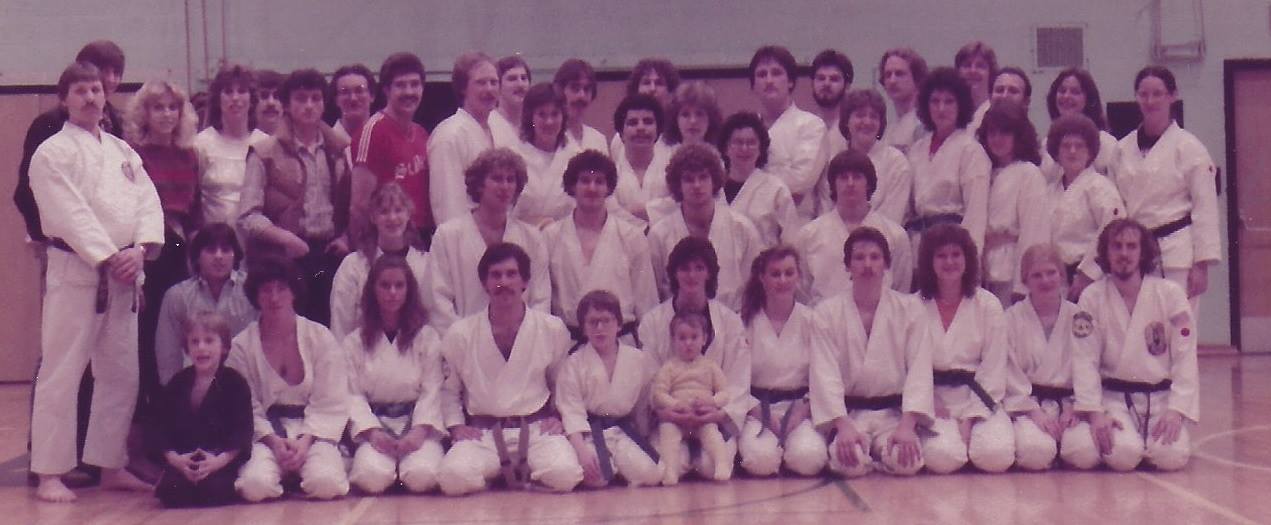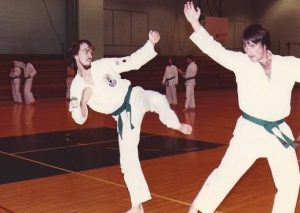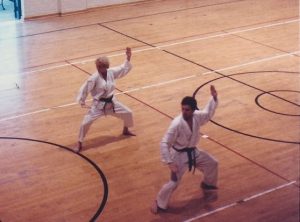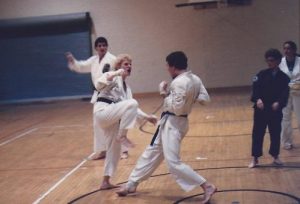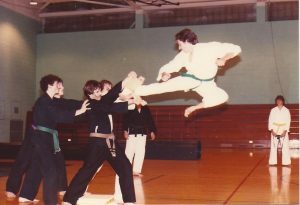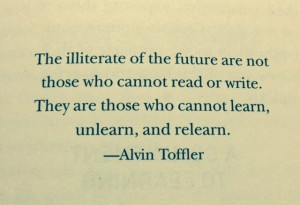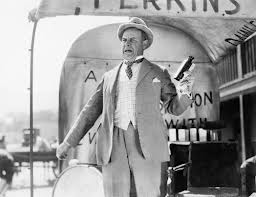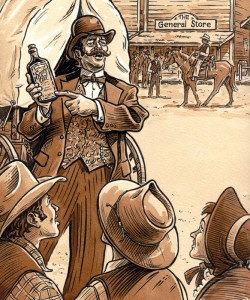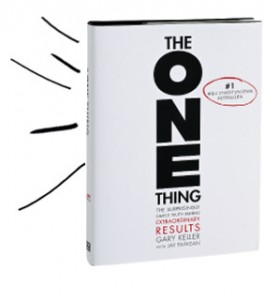Why are some sales won and others lost? If you ask salespeople they tell you “price” is why sales are lost. However if you ask buyers “trust” is why sales are lost. The buyer did not feel your salesperson understood the entire buying iceberg, so they did not trust their proposed solution. In my last few posts I shared how understanding customer voice drives profitable sales. In this post I will share how it feels when sales does not understand their market and buyers and the impact it has on hitting their (your) numbers.
It was New Years Eve 2016 and my wife and I decided to make a fire in the fireplace, have a nice dinner at home for a change and watch the ball drop in New York City. We flipped between channels and watched various entertainers. For the past week the TV stations have been building up for Mariah Carey ‘s performance New Years Eve. Mariah took the stage and if you watched the show it was by far the most uncomfortable performance have ever seen.
We had such high expectations based on her singing abilities and the build up to this presentation. It was terrible! In her defense there were a number of technical difficulties like not being able to hear her music, the songs were in the wrong order and so on. She has an amazing vocal gift as an artist and this performance was not representative of her gifts. She looked beautiful but from the beginning of the performance to the end it was awkward at best. She tried to find her place in the song and regroup but failed. She tried to move around the stage and even tried a few dance moves and one of the other dancers almost dropped her. She eventually asked the audience to sing her song and at the end walked of the stage.
My wife and I were both so disturbed by how awkward that experience felt for us. My wife is a Mariah fan and felt bad about her technical difficulties. I shared the reason you practice and have training is not for when things go right, but its for when things like this go wrong.
Did you watch the attempted performance? If not you can view it here since social media was lighting up during and many hours after.
How did it make you feel,.. I mean feel inside?
It felt uncomfortable, awkward, and if you are like my wife you may even feel a bit sorry for her because we know she is much better than what we just experienced.
How you feel watching this is the feeling I get when I help sales teams who attempt to sell buyers but have dated value propositions, no formal sales process, and little if any sales tools or training for how buyers buy today.
One of roles when I help teams increase sales and fix sales a problem is assess and coach salespeople. I do this with a review of their KPI’s, past account feedback, CRM activity, but my favorite way is on four legged sales calls with them and their customers and prospects.
I use these joint calls to capture the current voice of the customers and markets, and I want to see (feel) if the salespeople are presenting their buyers in a trust building authentic way or does it feel canned, awkward, dated and not what the buyers need today.
When traveling with salespeople look for:
- Conversation tone, comfortable and authentic?
- Market and customer knowledge?
- What sales tools were used(if any)?
- Trust building conversation, use of stories and case studies?
- Product knowledge / service knowledge?
- Customer knowledge by salesperson?
- Sales tools used at the right time?
- Was the day planned well?
- Active listening to understand not to just reply?
- Buyer non verbal communication?
- What sales tools were used?
- Did the salesperson know how to get to the account (don’t laugh I have seen this too)?
- Did sales ask questions and take notes?
- Did buyer(s) ask any questions about product or service we could not answer?
- Did buyer require some criteria we were not prepared to deliver?
- Understand key buying criteria and rank them?
- Did we find all players involved in buying decision?
- What are the competitors doing well?
- Did the person we met with have the power to buy?
- Does sales understand any shifts in buying at their accounts?
- Would I buy from this salesperson?
I prefer to be in the market with my sales teams constantly learning how buyers are buying and what they need to buy today. I prefer to experience what our buyers hear and feel and coach sales quickly after each sales call.
After each buyer call I make it a practice to have a coaching opportunity with the salesperson:
- How do you think the call went? ( do they know a good call from a poor one?)
- What do you think the buyers biggest pain is today?
- What did you hear the competitors are doing well?
- How do you think your presentation went?
- If you had to do it over again is there anything you would change?
- What are our follow up items?
- What new pain did we discover?
- When do they need our follow up?
- Are we dealing with power?
- On a scale of 1% to 100% what % to you believe we will win this opportunity and why?
If your team has recently conducted market research in the form of customer voice work, win loss analysis, and or a value proposition audit your salespeople know their markets, common problems you solve for your buyers and have strong value propositions they often share in the form of stories. Because your team understands the buying journey and criteria today, you have the right sales tools that are used at the right time and you win sales.
What kind of sales calls are your team members having with buyers in your markets today?
A quick example…
I was asked to help a company whose sales were climbing consistently for years but then stalled for the last three years. I was asked to help get sales growing profitably again in the quickest way possible. As I have shared, the first step of my process understand market truth by meeting with customers and prospects. I asked the CEO who was his top performing regional manager because I wanted to experience what was working so we could scale it. I made arrangements to travel with Jason who has been a regional manager with this company for 20 years and has two of the company’s top customers.
Jason picked me up at the airport and we were off to the first meeting. On the way Jason was a very likable guy and was really curious about why I asked to travel with him first since he was one of the first regional managers. I shared that the CEO really valued him and I thought I could learn a great deal quickly working with him. We made small talk on the 90-minute drive and I heard about his career with the company, all the changes he has seen and how strong his relationships were with all his customers.
Our first call was with the company’s second largest account in North America. As soon as Jason turned the engine off his car door was opening and he was ready to charge in. I asked he slow down and help me understand what we hope to achieve in this call today. So Jason got back in the car and seemed somewhat aggravated.
The conversation went like this:
What’s our plan?
We are calling on our second largest account.
What do we hope to achieve?
Introduce you to account and follow up from my last meeting a month ago.
What did you present a month ago?
Our new product launching this month, the buyer promised to support it.
Great, so your goal today is to walk out with orders or a commitment to buy?
(Another awkward look) well let’s see how it goes this guy loves working with me and I am sure we will win some orders.
We signed in and were escorted to a very impressive conference room. I opened my note pad and got prepared to meet with the buyer. Lou the buyer came in and had a number of people with him: the engineering director, their sales manager, and the director of customer service and training.
Jason started out introducing me and letting me ask a few questions as the “new guy”.
Jason asked the buyer the status with the pre-order for the new product launch. He said everyone at our company is looking forward to his continued support and we want to make sure we ship you on time.
The room was like someone sucked all the air out of it. Everyone, from a non-verbal communications, was uneasy. The director of engineering was looking at our buyer; the buyer looking at customer service manager and the sales manger was visibly frustrated. Even Jason looked uncomfortable, as his face grew very red.
The buyer looked at Jason and said:
- When we met a month ago I said I was very interested in supporting this new product launch, but since you are displacing an existing vendor who we too have a long relationship with we needed to have all the decision makers in the room and have you present your products to win placement.
- I gathered all team members for this meeting and we expected you to come here today and present the products about to launch and answer any questions each of our department heads had.
- After your presentation we meet, discuss the opportunity and give you our commitment unless there was some unforeseen issues within two weeks.
Jason was having a “Sales Maria New Years Moment”!
- He did not understand the buyers expectation for this meeting
- He did not understand the buyers buying process for displacing current vendor partners
- He did not know the other buying decision makers/ influencers or what they needed in terms of criteria
- He was not prepared, no sell sheets, no lap top presentation, no content on the problems this new line of products solves, why we were introducing it, or why its better than the current vendor’s.
- He did not know nor was prepared to discuss a program to help the distributor sell out the current vendors inventory, and the buyer expected one
Jason showed up and counted on his relationship with Lou to help him place the new product line (like he did 10 years ago). He was not prepared for what the account needed to make a buying decision. He did not understand the impact such a change would have on other leaders at this customer. At one point of the meeting it was as if the audience was singing the words he should have known. The meeting was awkward to attend and we did not gain a commitment.
Being the new guy in the room I wanted to somehow save this opportunity while Jason cooled off.
“It sounds like we have some homework to do. Being new to this industry I would really appreciate each of you sharing what you would have liked to hear from us today.”
Engineering – is your product a perfect replacement for what we are buying now or is modifications required, if so what are they and did you factor those into your price? He had some very specific technical product questions we were not prepared to answer as well.
Sales Manager- what is your plan to train my sales team. A number of my guys love our current vendor and their rep. Do you plan a SPIFF to launch? What is it? When would you have a sales training? Do you have new brochures? When we explain to our customers the change to your product why is it better? It would be great to have some third party tests or any data you had.
Customer service training – since so many of our orders come in over the phone what’s the plan to train my team? When would that happen? Will the sales incentive contest include my team? Is your product a perfect replacement? Will your product ship with bar code labels like our current vendor? Will you drop ship my customers with our invoice?
Buyer – you know based on our purchases we buy in volume. What is my truckload price? Can I include this new product with other current products to get my free freight quicker? What is your program to blow out my current inventory? Will you province upfront money or a discount off my orders over time? Can I place a blanket order and draw from it to get a good cost like the competitor or is price based on each order? What is the delivery window from order placement to arrival at our warehouse? We moved to a just in time model and I am now being evaluated on inventory turns and dollars in inventory.
We gathered as much information as they would share and scheduled a follow up presentation in two weeks and offered to make it over lunch. I apologized this meeting did not go as they expected and assured them they would have everything they needed in two weeks.
In the car Jason and I went over the coaching questions about the meeting and I could tell Jason felt uncomfortable. He shared: ” I can tell you are new, no one has ever asked me so many questions after a call before here at ______”
Like many salespeople who have sold for 20+ years Jason is a strong relationship sales person but needs to adjust his style to grow his market’s sales today. I wish what I experienced here was rare or unusual but it is not. Every day salespeople are showing up and trying to win sales like the always have and are losing sales they should have won. Why? The main reason is they do not understand how buyers are buying or what they need to buy today. They lack updated sales tools that speak to needed buying criteria.
So what do they do?
They count on having “good relationships” and lose sales they could have won with some market research preparation, sales coaching and training.
Are your salespeople having “Sales Mariah Moments” with your customers?
How would you know?
If this was a new customer what probability do you think we would have of selling them? or a second meeting?
Who on your team understand what your buyers need to make buying decisions today?
The rest of our meetings that day went pretty much the same. They were what I refer to as “ Hi how are ya” meetings. (Almost as bad as dropping off donuts and logging it as a sales call in the CRM) They lacked a purpose and often left me feeling like we wasted the buyers’ time. They felt reactive and not proactive. Jason is a great guy and has done many favors for his customers over the years. All his accounts shared how much they liked him and appreciated him fighting on their behalf with corporate. But Jason’s account sales were flat and he has seen limited success placing and selling new products. Looking at the sales data he hit his numbers when his large accounts had good sales years but has not added any new accounts in 18 months.
Today is a new day with buyers having as much as 60%-70% of the buying process done before they meet with salespeople. The buyer obviously trusted Jason and we can build on this, but some of that trust was broken when Jason failed to listen to what the buyer’s process was, who else would be involved in the buying decision and what those leaders needed. Was it beyond repair? No. Jason must do a much better job of taking notes in meetings and following up. The company owes Jason a repeatable sales process to follow based on how the buyers buy today and new sales tools for each of the common buying influencers in this market.
“Sales Mariah Moments” are painful to experience and expensive in cost of sale and lost sales we could have won.
Understanding your markets and buyers is key to avoiding Sales Mariah Moments. Like Mariah Carey your salespeople are talented and all have gifts. Your company provides quality products and good service. We must insure we equip and train our salespeople to win in their markets today.
No matter how long your salespeople have worked for you they still need to make adjustments to how they present their customers. My guess is if I not had been at this meeting the CRM would have read:
“Good meeting, buyer loves us, we have some tough competition in this account and we need to revisit our price strategy to win. I am confident if we give them a volume cost program we will win their support”.
Does your CRM have a number of “Good Meetings” notes with no sales increases to follow?
To insure sales and sales leadership understands and implements a proven sales process and tools based on how buyers are buying today you must understand your markets and have sales training and coaching.
The sales training and practice role-playing is for when meetings don’t go as planned but you still can salvage a commitment.
Coaching is to insure your team knows this is not some new fad that will go away in a month or so but your team is committed to a formal sales process to win more sales.
The foundation of your sales success lies in understanding your buyers and helping them buy the way they are buying today.
Market research is critical parts of helping your sales team win today.
What happens if your team fails to understand what your buyers want and need and how they buy?
Your team will have “ Mariah New Years Eve Moments” leaving you to explain to your board and investors why so many good meetings are not helping you hit your number.

